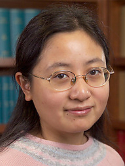An assessment of prognostic factors, adjuvant treatment, and outcomes of stage IA polyp-limited versus endometrium-limited type II endometrial carcinoma Journal Article
| Authors: | Liang, L. W.; Perez, A. R.; Cangemi, N. A.; Zhou, Q.; Iasonos, A.; Abu-Rustum, N.; Alektiar, K. M.; Makker, V. |
| Article Title: | An assessment of prognostic factors, adjuvant treatment, and outcomes of stage IA polyp-limited versus endometrium-limited type II endometrial carcinoma |
| Abstract: | Objective To determine clinical outcomes in patients with stage IA polyp-limited versus endometrium-limited high-grade (type II) endometrial carcinoma (EC). Methods We identified all cases of stage IA polyp-limited or endometrium-limited high-grade EC (FIGO grade 3 endometrioid, serous, clear cell, or mixed) who underwent simple hysterectomy, bilateral salpingo-oophorectomy, peritoneal washings, omental biopsy, and pelvic and para-aortic lymph node dissection and received adjuvant treatment at our institution from October 1995 to November 2012. Progression-free survival (PFS) and overall survival (OS) by histology, adjuvant therapy, and polyp-limited versus endometrium-limited disease status were determined using log-rank test. We analyzed 3 treatment groups: patients who received chemotherapy with or without radiation therapy (RT) (intravaginal or pelvic); patients who received RT (intravaginal RT or pelvic RT) alone; and patients who received no adjuvant treatment. Results In all, 85 women underwent hysterectomy/salpingo-oophorectomy; all were surgically staged with lymph node assessment and had stage IA EC with no lymphovascular or myometrial invasion. Median follow-up for survivors was 46.5 months (range, 1.98-188.8 months). Forty-nine patients (57.6%) had polyp-limited disease, and 36 (42.4%) had endometrium-limited disease. There were no significant differences in clinicopathologic characteristics between patients within the 3 treatment groups with regard to age at diagnosis, mean body mass index, ECOG (Eastern Cooperative Oncology Group) performance status, polyp-limited or endometrium-limited disease, diabetes, or race. The 3-year PFS rate was 94.9% and the 3-year OS rate was 98.8%. Univariate PFS and OS analysis revealed that age was a relevant prognostic factor (PFS hazard ratio [95% confidence interval], 1.13 [1.02-1.25]; P = 0.022; OS hazard ratio [95% confidence interval], 1.19 [1.02-1.38]; P = 0.03). Adjuvant treatment did not impact outcomes. Conclusions Clinical outcomes of surgical stage IA type II polyp-or endometrium-limited high-grade epithelial EC are equally favorable regardless of histologic subtype or adjuvant therapy received. The benefit of adjuvant therapy in this select group remains to be determined. © 2016 by IGCS and ESGO. Unauthorized reproduction of this article is prohibited. |
| Keywords: | chemotherapy; radiation; completely resected; intravaginal radiation therapy; stage ia |
| Journal Title: | International Journal of Gynecological Cancer |
| Volume: | 26 |
| Issue: | 3 |
| ISSN: | 1048-891X |
| Publisher: | Lippincott Williams & Wilkins |
| Date Published: | 2016-03-01 |
| Start Page: | 497 |
| End Page: | 504 |
| Language: | English |
| DOI: | 10.1097/igc.0000000000000635 |
| PROVIDER: | scopus |
| PMCID: | PMC4761284 |
| PUBMED: | 26825840 |
| DOI/URL: | |
| Notes: | Article -- Export Date: 2 May 2016 -- Source: Scopus |
Altmetric
Citation Impact
BMJ Impact Analytics
Related MSK Work









